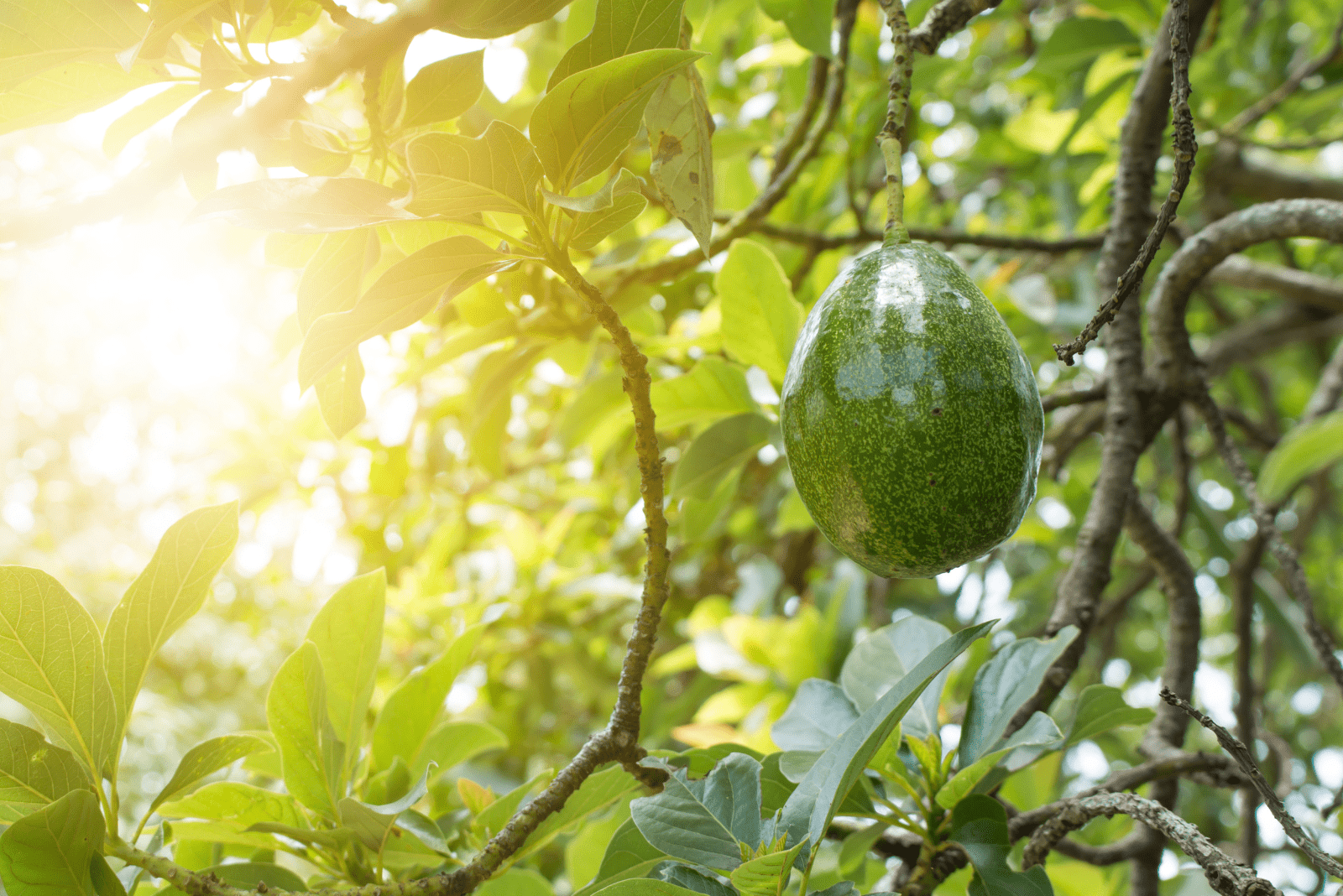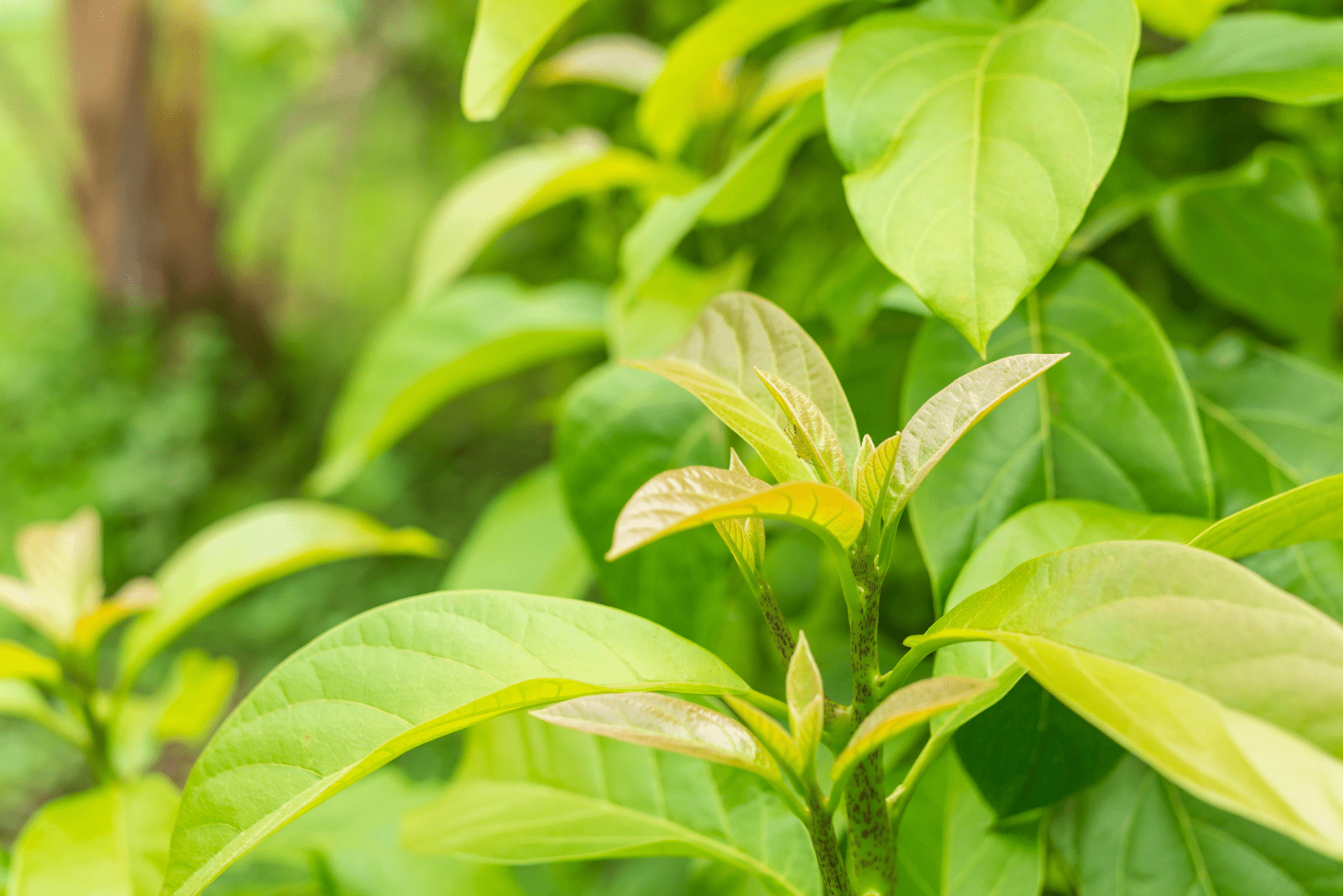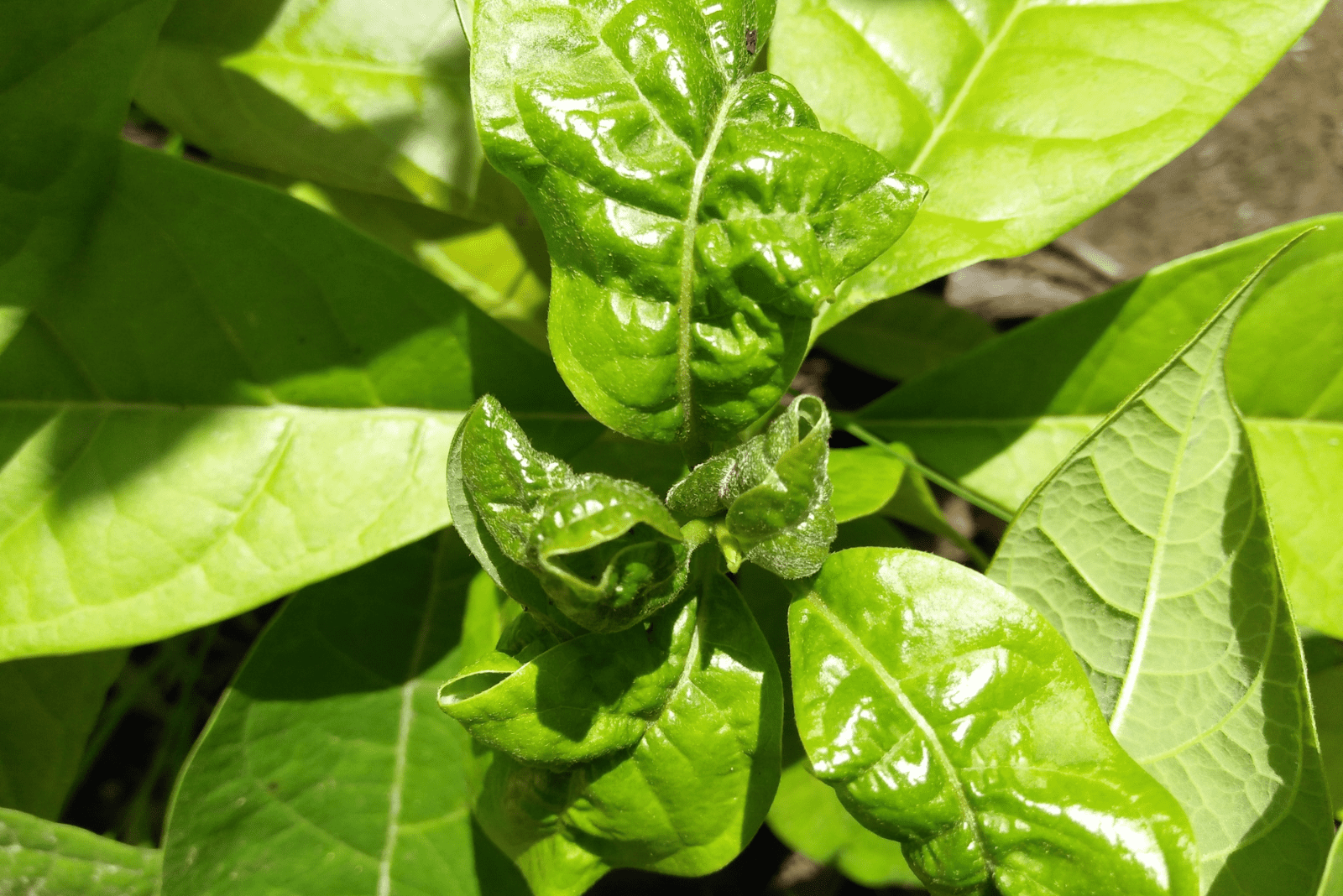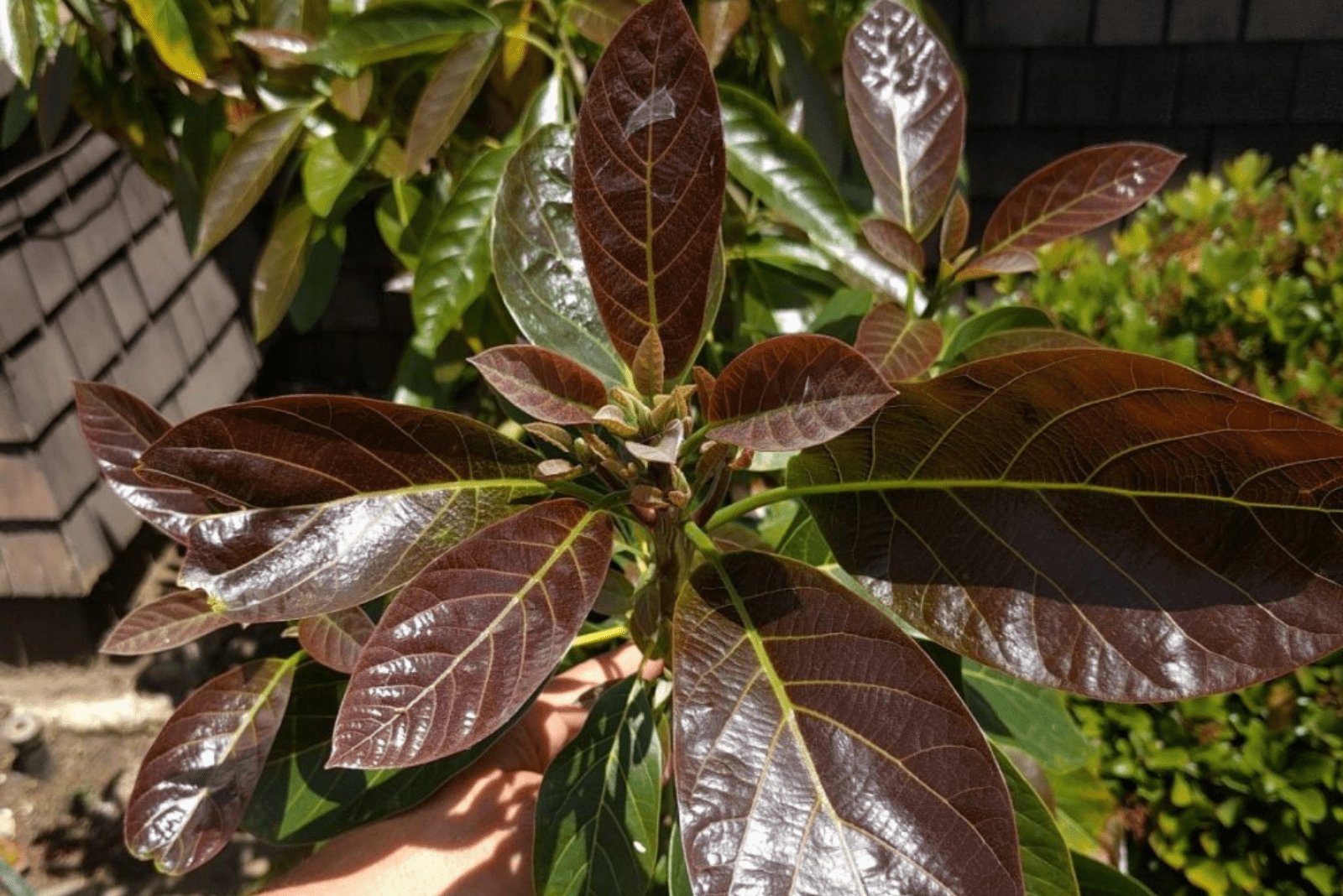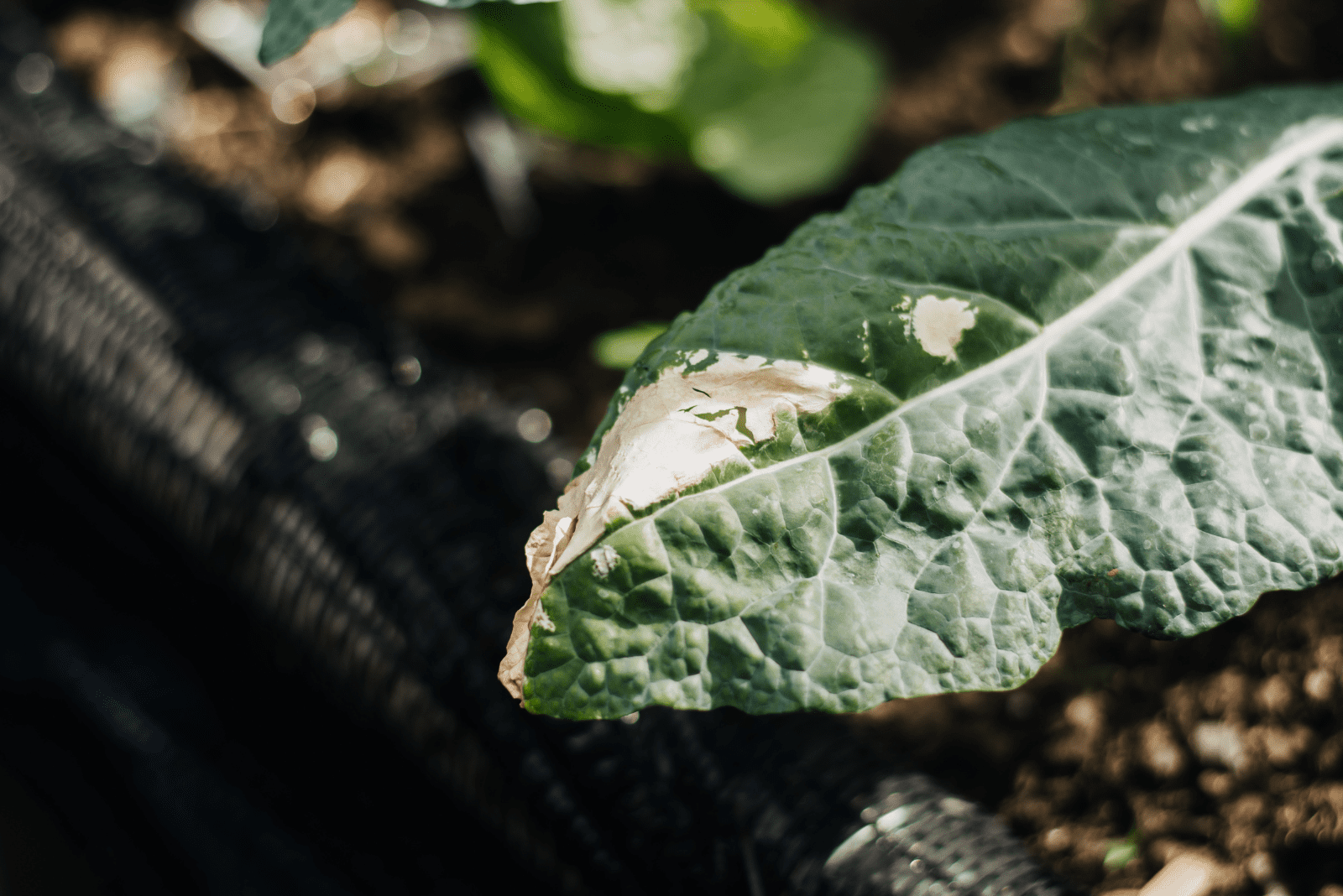Growing Avocado plants indoors has become quite popular these days, especially with the famous Avocado toast trend that has gone viral all over TikTok!
There are also many tips and tricks on how to grow avocados indoors because it might be tricky to grow a plant that will produce full-size avocados. Though it might be difficult, it’s not impossible!
All you have to do is provide them with the best-growing conditions, which includes getting the right temperature and nutrient balance in the soil, as well as keeping a close eye on pest infestations.
In most cases, the plant will actually tell you if there is something wrong with it. You will notice that the leaves start changing and the entire plant will look droopy and sad. If you take a closer look at the leaves, you can figure out what the actual issue is and try to fix it!
We are going to cover all the avocado leaf problems so you will be able to determine the issue with your plant and fix it. You’ll be back to eating loads of homemade avocado toast in no time!
What Are The Most Common Avocado Leaf Problems?
If you have been growing avocado plants for a while, then you are likely already familiar with this plant’s unexpected appearances — for instance, the veins on the leaves will turn yellow in the winter, which indicates leaf senescence. This is a completely natural process that happens in the majority of plants.
But it’s true that any leaf discoloration indicates a problem — whether it’s a pest infestation, fungal diseases, inadequate watering, or wrong temperatures. It’s up to you to figure out the answer!
Luckily, this can be easily fixed, and your plant will keep on growing to produce new avocado fruits.
Yellow Leaves
Almost every grower has to deal with yellow leaves when growing houseplants at some point. This is because most plants aren’t used to growing indoors, so you have to try and mimic their natural habitat if you want to keep them happy and healthy!
Trust me, I know all about this because I overwatered my first pothos — at one point there were no green leaves left at all!
While leaves turning yellow is due to overwatering in most cases, there are a few other reasons your Avocado tree leaves are turning yellow.
Natural Aging
As we already mentioned, you will notice that the veins on the leaves will start to change color when winter comes. This is a completely normal process, and it just means that the leaves are naturally dying off.
Though the yellowing will start at the veins, the entire leaf will slowly turn yellow and fall off.
But don’t worry, because you will see new growth as soon as the new growing season arrives!
Sunburn
The sun is dangerous, and we should all wear SPF, but sadly there is no such thing for plants. Your plants can easily get sunburned, which damages their overall health and fruit production.
If you live in an area with extremely hot summers, then growing Avocado trees outdoors might not be such a great idea. These plants can’t stand temperatures above 100 degrees Fahrenheit, especially the young avocado tree, which is quite fragile.
In addition to high temperatures, direct sunlight exposure should also be avoided because their precious green leaves will slowly turn yellow and the leaf tips will brown and start to look toasted.
Your avocado plant will also require more water and humidity because of the heat.
However, they still need some sunlight to produce the energy needed to establish a healthy root system and keep them alive. Ideally, they should receive bright indirect light throughout the day.
To fix this issue, simply find a new location for your precious baby avocado tree!
Nutrient Deficiency
Another reason you might see avocado leaves turning yellow is nutrient deficiency. These plants need a lot of nutrients during the growing season, and they should be fertilized at least once a month.
However, if you don’t use proper fertilizer, or if you don’t fertilize your plant at all, it might affect the plant’s overall health and fruit production.
For instance, the margins of the leaves might start to turn yellow due to iron and zinc deficiency. Lack of iron usually occurs in soil with high pH levels and calcium carbonate.
Yellowing between the veins on the leaves indicates a magnesium deficiency, while leaves turning a bronze color indicates a lack of phosphorus or potassium.
On the other hand, too much fertilizer can also have a negative impact.
If you keep applying too much fertilizer, it will lead to chemical build-up in the soil. These chemicals will prevent the plant’s roots from absorbing nutrients and water, which are crucial for keeping it alive.
Stunted growth, yellow leaves, and leaves falling off are usually a sign of overfertilization. To fix the fertilization issue, make sure that you repot the plant and switch to an all-purpose fertilizer.
Pest Infestation
Your precious little avocado plant is unfortunately susceptible to mites. These pests are known as Avocado mites.
These mites will start to feed at the midrib of the leaves, and will slowly switch to the veins and eventually the entire leaf.
In the case of an Avocado mites infestation, the yellow spots on the leaves indicate the areas that they have been feeding on. If you see any yellow spots on the leaves, make sure that you check the underside of the leaves to see if there are any mites there.
Signs of pest infestation are similar to cold damage, so make sure that your plant is definitely suffering from a mites infestation before applying pesticides or insecticides — you don’t want to apply these chemicals if the issue is low temperature.
Most gardeners apply sulfur oil emulsion spray, though you can also use horticultural oils or pyrethrin.
Pyrethrins are a naturally occurring chrysanthemum derivative. Due to its minimal toxicity to both humans and animals, this natural pesticide has been utilized in agriculture for a long time.
I always suggest using horticultural oils or insecticidal soap as safer alternatives.
You can either get it from a store or try making your own by combining dish soap and warm water. To make your own horticulture soap, you’ll need tap water, non-fragrant dishwashing detergent, and a vegetable, tree, or nut-based oil.
Mix eight parts water, one part dish soap, and two parts oil to get the correct dilution. While freshly bottled water is recommended, you can leave tap water out for 24 hours so the chemicals have time to evaporate.
This mixture can be put into a spray bottle and used once every few weeks or right after every third watering.
Brown Leaves
The most common reasons plant leaves burn are over fertilization and high temperatures. In most cases, leaves that are exposed to direct sun for a long period of time will begin to turn yellow, then eventually become brown and crispy.
Always remember to keep your avocado plant away from the sun!
Let’s learn more about fertilization and high temperatures.
Overfertilization
Similarly to overwatering, overfertilization is a common issue because gardeners assume their plants always need more plant food. However, that is not usually not the case, and we end up doing more harm than good!
If you keep applying fertilizer, it will lead to salt and chemical build-up in the soil. Excessive salt and chemicals will prevent the roots from absorbing water and nutrients, and can permanently damage your plant.
To fix this issue, you should start watering your plant to remove excess salt and ease up with the fertilizer!
Down to Earth Organic Citrus Fertilizer, which has a 6-3-3 composition, is excellent for avocado trees and citrus plants, though it is most commonly used as a lemon tree fertilizer.
This fertilizer is adaptable and can be applied to a variety of trees and ornamental plants to encourage flowering and leaf growth.
Just make sure that you follow the instructions displayed on the packaging to avoid overfertilizing your baby avocado tree!
Warm Temperatures
As we already mentioned, direct sun can burn your leaves. If you notice that the leaves have started turning brown even when the plant is not exposed to direct sunlight, then the issue might be warm temperatures.
Avocado plants prefer growing in temperatures from 65 to 86 degrees Fahrenheit. Anything higher than that can seriously affect your plant.
If you are growing your plant indoors, try moving it to a cooler location. If you grow this plant outdoors, try to provide it with some shade.
Curling Leaves
Curling leaves are another common issue faced by gardeners. The usual culprit is inadequate watering; if you don’t give your plants enough water, their leaves will curl inward to try and retain moisture.
On the other hand, they will start curling outwards because of excess moisture.
However, the reason your avocado leaves are curling could also be leafrollers or caterpillars.
Inadequate Watering
The key to growing avocado plants is keeping the soil moist, however, there is a fine line between overwatering your plants and not providing them with enough water.
Overwatering is a much bigger issue here because the soggy soil attracts various pests and fungi. Overwatering can easily lead to root rot, which is a deadly fungal infection that can completely destroy your plant.
If you notice any leaf curling, check the soil first.
If the soil smells kind of funny, you should repot the plant and trim any mushy and decaying roots you find.
To fix water issues, I recommend you check the soil before watering — if the first few inches of the soil are still wet, there is no need for watering. However, if the topsoil is dry, then you should water your avocado plant.
Leafroller (Type Of Caterpillar)
Just as the name suggests, this caterpillar likes to roll in the leaves and create a nest inside. What’s interesting is that they use silk to create a nest.
They start literally living in the leaves, and then start eating them!
Luckily, these bugs don’t do a lot of damage if there are only a few leafrollers. In this case, you can easily pick them off by hand and put them in soapy water.
However, if you are dealing with a severe leafroller infestation, you should apply chemicals to get rid of them. You can also try introducing their predators, such as Bacillus thuringiensis — it will eat these leafrollers for breakfast!
Some other signs of leafroller infestation (in addition to the leaves curling) are defoliation, leaves joined by silk webbing, consumption of the upper surface of the leaves, damaged fruit, and skeletonization of the leaves.
The adult moth is an orange or tan color with dark markings and bell-shaped wings. Young larvae are yellow-green and mature to dark green. They also have a short, dark horizontal line on the side of their thorax.
Other types of caterpillars that infest these plants are orange tortrix and loopers.
Purple Leaves
Purple leaves are not something commonly seen when growing plants (unless the plant produces purple leaves naturally). These leaves usually indicate that there is a lack of certain nutrients or that it’s producing more Anthocyanin.
Keep reading to find out more about Anthocyanin and what nutrient deficiency causes the avocado trees to produce purple leaves.
High Anthocyanin Levels
Anthocyanins are a family of intensely colored red, purple, and blue pigments that are present in plants. They belong to the larger class of plant-based compounds known as flavonoids. All plant parts, including fruits, seeds, shoots, flowers, and leaves, are rich in flavonoids.
Sudden changes to plants, such as transplant shock, low temperatures, underwatering, and other diseases might cause high anthocyanin levels.
This is characteristic to specific avocado plant species known as “Hass”. This plant will produce purple leaves instead of green ones, and although this might be aesthetically pleasing, it usually indicates that there is something wrong with your plant.
To fix this issue, make sure that you provide your plant with the best possible care and give it plenty of water right after transplantation to help it adjust to its new environment.
Lack Of Phosphorus
In most cases, young avocado trees will start producing purple leaves more often than more mature ones. This is because they create and spend their energy quickly, and phosphorus is crucial for creating energy.
This can be easily fixed — provide your plants with better soil that is rich in organic matter, or simply use fertilizers that contain phosphorus. You can also apply ones that contain bone or greensand.
Black Leaves
It’s never a good sign to see black leaves as it usually indicates that your plant is going through something terrible. However, all is not yet lost and you can still try to save your plant.
There are a few reasons your plant’s leaves might be turning black. The usual cause is fungal diseases, though it can also be due to chemicals present in tap water.
First, let’s talk about the fungal diseases that cause black leaves.
Fungal Diseases
Common Avocado diseases include Anthracnose, Algal leaf spot, and avocado root rot. Though these are the most common that cause black leaves, there are some other diseases that can affect your plant’s health (but more on that later on!).
These fungi are usually attracted to overwatered avocados and soggy soil. For instance, untreated Anthracnose can affect the fruitset on a tree, and the fresh avocado fruits have lesions and brown spots all over. This can also occur when you are growing eggplants.
Cephaleuros virescens, otherwise known as Algal leaf spot, is a viral infection characterized by red and orange spots all over the leaves. If you scrape these spots, you will notice a dark necrotic crust beneath. These infections are usually harmless.
Avocado root rot is the most dangerous one because it affects the tree roots, which are the most important part of the plant. Infected trees will have a damaged root system, which will slowly stop functioning.
Repotting is inevitable, or you can try to propagate the plant.
As all three diseases are caused by inadequate watering, be mindful of the watering needs of your fruit tree, especially if they are at the seedling stage, which is when the plants are most fragile.
Chemicals In Tap Water
Although it is quite safe to drink tap water and use it for your plants, some chemicals found in it can be harmful. But don’t worry, this doesn’t necessarily mean that they are bad for you.
For instance, the chloride salts present in water can have a negative effect on your precious avocado. We already mentioned that salt build-up from fertilizer isn’t good for your plant, and the same thing goes for salts present in the water.
If your plant is affected by high salt concentration in the soil, leaf burn is the first symptom.
There are a few options for fixing this issue; you can use filtered water instead or try to collect rainwater. Most growers collect rainwater and use it to water all of their houseplants because this type of water is found in their natural habitat.
However, you can also try adding lime or gypsum to the top of the soil and use the same type of water for your Avocado tree.
Read also: What Is The Best Water For Plants? Find Out The Answer Here!
White Spots On Leaves
When you see spots on the leaves, in most cases they indicate a pest infestation. If you see any white spots, the most likely culprits include whiteflies, thrips, and spider mites.
Though these spots can also result from fungal infections such as powdery mildew.
Pests
Spider mites are tiny bugs that usually reside on the undersides of leaves. They also make tiny, silky webs — just like spiders! However, these mites usually live on houseplants in dry and warm conditions.
Whiteflies reside on the undersides of the leaves like spider mites, however, they resemble moths and are similar in size to gnats. These little critters produce honeydew, a sticky substance that eventually results in mildew.
Avocado thrips mostly affect the fruits — female thrips lay eggs in the leaves, young fruits, and petioles. These develop into larvae, which will completely demolish your plant.
You can easily treat these pests with pesticides, and you can also try applying neem oil to the leaves (neem oil works as a fungicide and pesticide). Please note that these pests won’t infest a healthy tree — so following proper plant care is crucial!
Powdery Mildew
If you notice any white patches that look like snow or dust on the leaves, then you are probably dealing with powdery mildew. If affected leaves are left untreated, they will turn yellow and fall off.
Spray your plants with a solution of one part milk to five parts water once a week until you get rid of the fungus. You can also use neem oil as a fungicide.
Leaf Drop
One of the common avocado growing problems is leaf drop. These plants are extremely sensitive, and any mistake can easily affect their well-being. For instance, if you don’t give them enough water, the leaves will immediately drop.
In addition to inadequate watering, these plants don’t respond well to sudden changes — this can include repotting or sudden changes in location and temperature.
Inadequate Watering
As we already mentioned, inadequate watering can cause serious issues when growing avocado plants. Always make sure to check the soil before watering, and plant them in soil that is well-draining because poor drainage can also lead to watering issues.
If you are growing an avocado plant in a pot, make sure that the pot has drainage holes in the bottom. This will help to remove excess water and prevent overwatering.
Location & Temperature
If your Avocado plant is in a warm location that gets enough indirect sunlight throughout the day, then you’ve done a great job!
However, if you suddenly move it somewhere that’s exposed to full sun, the leaves might drop off your plant. This also applies if you keep your plant next to a door or window that is opened and closed constantly and causes temperature fluctuations.
Brown Spots
If you notice any dark brown spots on the leaves, it usually means that you are dealing with an avocado mites infestation.
These mites start by munching on the midrib of the leaf, then slowly switch to the rest of it. Though these critters usually cause leaves to turn yellow, if they are left untreated you will see brown spots all over!
In addition to this, brown spots can appear due to cold damage. You don’t have to worry about cold damage if you live in an area with a hot climate, like Florida. However, if you live in an area where winters are quite cold, make sure that you bring your avocado plant indoors!
Avocado Problems: Pests & Diseases
We have covered several Avocado leaf problems, but there are other issues that can affect this plant. Although most pests and diseases affect the leaves, there are some that absolutely love the fruits, and fungi that affect the stems.
Let’s find out more about the other problems that your Avocado plant might encounter.
Avocado Plant Diseases
Most of these diseases are caused by viruses, various pathogens, and fungi. We have already mentioned root rot, which is mostly caused by the fungus Armillaria mellea in avocado plants, though there are numerous fungi that can cause this issue.
Other Avocado plant diseases include Avocado Black streak, Sunblotch, Phytophthora Canker, and Dothiorella Canker.
Avocado Black Streak
Black streak is like the Black death for avocados — this disease will completely destroy your plant to the point that you can no longer save it.
Early symptoms of the disease frequently include a lack of fruit output, blotchy leaf marks, and a general yellowing of the tree’s foliage.
Cankers frequently develop on the tree trunk and branches as the disease spreads, and new growth immediately dies off.
Sunblotch
Avocado sunblotch viroid (ASBvd), commonly known as Sunblotch, is a disease caused by small viral particles known as viroids — these are actually proteins that can infect the host and affect the growth and development of avocados.
The affected Avocado trees produce fewer fruits that are also of poor quality.
Young stems have red, yellow, pink, or white streaks running along them, and the fruit has white, yellow, or red spots — these are the symptoms of sunblotch.
This viroid is usually transmitted through grafting, so you should always sanitize your pruning tools!
Phytophthora Canker
Another harmful pathogen that affects avocado trees is Phytophthora canker. The lower trunk typically develops a number of lesions or cankers as a symptom of phytophthora canker. These dark-colored cankers frequently start to exude a fluid that resembles reddish sap and is sometimes said to smell fruity.
Even though most avocado trees die very shortly after coming into contact with Phytophthora canker, some well-established trees fight for their lives for a couple of years!
Treatment for this disease is particularly difficult as it frequently affects plants that also have avocado root rot. I would suggest you try and propagate the plant in the hopes of growing another.
Dothiorella Canker
Dothiorella Canker rarely affects avocado trees, and even though it might seem like your avocado tree is dead, it can recover successfully with proper treatment.
Similarly to Phytophthora, it will develop on the lower trunk and primary branches. The bark on the trunk will ultimately start to break and peel away from the tree, and the cankers will start to release a white powder over time.
You can apply fungicides or potassium phosphate as a soil drench.
Avocado Pests
Unfortunately, Avocado plants are susceptible to various pests. Some of the pests primarily focus on eating leaves and fruits, including Amorbia pests, Avocado Brown mites, Persea mites, and Avocado thrips.
We have already talked about Amorbia pests, though we called them leafrollers — that’s right, these are the same two creatures that like to eat the leaves of Avocado trees and steal their nutrients.
Adult females can lay about 150 to 200 eggs in a matter of weeks. As these pests settle in the leaves and eat them, they start to roll. While mature and established plants can tolerate foliage loss, young avocado plants cannot withstand the eating habits of these little creatures, which is why they often deteriorate.
Avocado Brown mites are arthropods that have a dark brown and oval body shape. These mites can reproduce quickly, and there can be about 100 mites per leaf!
They completely ruin the leaves — defoliation and brown leaves are usually signs of Brown mites infestation, and you can identify them because they like to eat the leaves from the top to the bottom.
However, brown mites cannot withstand low temperatures, and they usually migrate once the temperature drops in the winter season.
Persea mites are characteristic to Hass and Gwen avocado varieties. These little creatures leave behind thick, silvery webbing on the underside of the leaf. From a distance, you might assume the silver sheen indicates that the avocado leaves are turning white. This can easily be confused with powdery mildew, which causes the tree to develop white fuzz.
Nonetheless, the silver webbing appears on the bottom of the leaves, and not on the top like in powdery mildew, so it’s simple to distinguish between them.
We have already discussed Avocado thrips — they don’t cause much damage to the plant because they solely affect the fruits. They usually leave leathery scars on the fruits, though severe scarring might cause stunted growth.
All of these pests can be prevented by taking good care of your plant, with an emphasis on watering. If you are growing an Avocado tree outdoors, you can even add mulch to prevent weed growth and water retention.
You can apply neem oil, various pesticides, and miticides, and you can also introduce some natural predators that feed on these critters. Make sure to follow the instructions displayed on the packaging!
Final Word
Although there are a lot of Avocado leaf problems, don’t let them stop you from trying to grow your own Avocados!
Trust me, there is nothing more satisfying than picking your own avocado and using it to make homemade avocado toast (and posting it on Instagram, duh!).
It can be tricky to grow them, but with proper plant care anything is possible!
Just be on the lookout for these little pests, and make sure that you don’t overwater your Avocado plants.
I hope this article was helpful, avo good day!
Like this post? Share or pin it for later!

